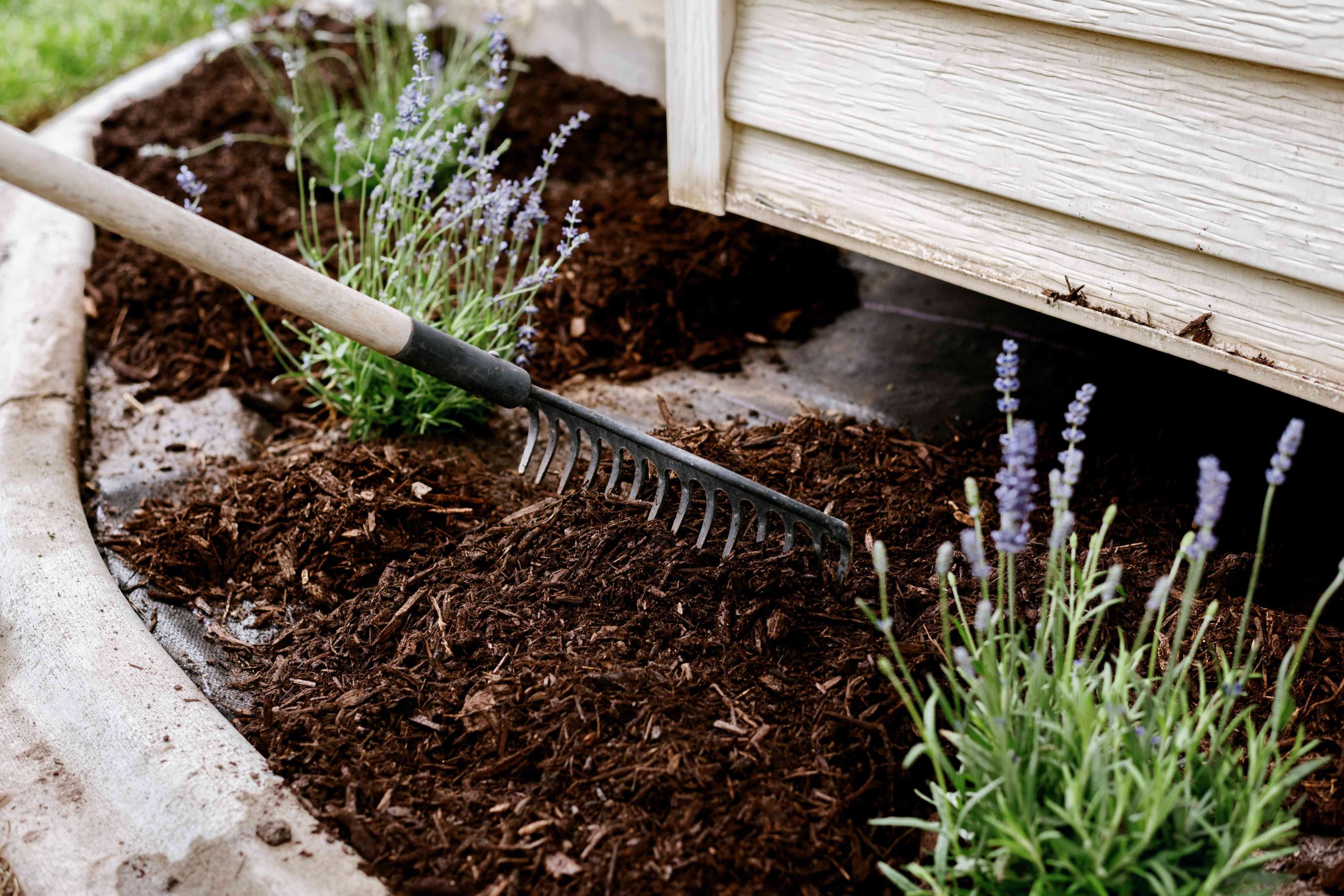Making the Most of Mulch: How to Optimize Your Garden Through Organics
When it comes to taking care of your garden, timing is key, and this adage rings particularly true for the use of mulch installation. The process is spreading primarily organic stuff over the top of your soil in order to insulate it, protect it from weeds, enhance its ability to retain moisture, as well as avoid soil erosion. However, if you apply mulch to your yard at the incorrect time, whether it be too early or too late, this might result in unforeseen repercussions.
Is There a Functional Purpose for Mulch?
The addition of mulch to your landscape is an excellent approach to make the area seem more attractive. It finishes off the aesthetic and (very literally) puts everything over the top.
However, the advantages are not limited to the enhancement of aesthetic value that it provides. First, let’s take a look at the four distinct types of mulch that are available, and then we’ll discuss the benefits of using mulch in your landscaping.
Control of Weeds
When the weather begins to warm up in the spring, if you have applied mulch to your garden over the winter, it will be easier to keep new weeds from sprouting up. During the growth season, spreading mulch along paths and around plants will cut down on the amount of weeding that has to be done.
Remove any weeds that may be present and level the ground to create a surface that is as close as level as possible before applying mulch to the area. The following are some more garden mulching suggestions that can assist you in maximizing the benefits that your selected ground cover has to offer:
The whole garden bed should have a layer of mulching material spread over it. The depth is determined by the substance that you are working with. In order to prevent the roots from being suffocated, the depth of fine-textured mulch, such as wood chips or bark, should not exceed two or three inches. It is possible to go as deep as four inches using mulches that have a more coarse texture, such as pine bark nuggets. It should not be any deeper than two inches, whether you are using grass clippings, hay, or shredded leaves as the material.
Maintain a distance of two to four inches between the stems of woody plants and mulch, and maintain a distance of six to twelve inches between the mulch and the walls of structures. The beginning of spring, before weed seeds begin to grow, is the ideal time to apply mulch to newly planted trees and shrubs. Water thoroughly any freshly applied layers of wood mulch after doing so. The development of fungi on their surface will be inhibited as a result of this.
Mulches made of wood might compete with your plants for nitrogen in the soil as they decompose. Nitrogen is essential for plant growth. Before you cover your garden bed with wood chips or bark, you should first provide it with some additional nitrogen in the form of blood meal or similar high-nitrogen fertilizer. This will ensure that your plants have the best chance of thriving. It is important to replace the mulch at the beginning and the conclusion of each growing season. Clear it out, and if necessary, add some more.
Warning Signs
Be wary of mulch that has a sour taste. A putrid odor, created by bacteria that thrive in anaerobic circumstances, may emanate from mulch that has been poorly kept for an extended period of time. If you receive mulch that smells like vinegar, ammonia, sulfur, or silage, do not use it since this kind of mulch may cause harm to plants and even cause their death. If you spread the mulch out in a thin layer and let it air out for one to three days, you can cure sour mulch. Even better, if you get your mulch from a reliable supplier, you won’t have to worry about it becoming rancid.
Improved Practices
What if you could lay out your garden in such a manner that it would take little to no effort on your part to till the soil, apply fertilizer, water, or pull weeds? After all, they are the activities that contribute to the time, expense, and labor-intensive nature of conventional gardening (as well as farming), right?
Now that we’ve got that out of the way let us introduce you to one of our greatest gardening friends, mulch, who can perform practically all of that job for you. Even though mulch is not a magic pill, we have discovered that putting 4-6 inches of wood chip mulch on top of our vegetable beds in the spring and then doing it again in the autumn yields results that are nearly as good as magic. No, mulch is not a magic pill. (It is important to note that we just “top-dress” the mulch onto the surface of our garden; we do not plow it in at any point.)
How Much Is the Mulch?
In order for the mulch to be beneficial to the plants, it must be applied appropriately; otherwise, the mulch may cause the plants to suffer. We suggest a mulch covering that is between 2 and 3 inches thick. When there is too much mulch, oxygen cannot get to the roots, and the roots may start to develop into mulch instead of soil if the situation is not corrected. Weeds will be able to emerge through the mulch if it is placed in an insufficiently thick layer.
Stay away from the mulch volcanoes! They are capable of causing harm to woody plants and creating an environment favorable to the survival of bark-eating voles. Mulches with a coarse texture are preferable to those with a fine texture since the latter might get compacted and limit the amount of oxygen in the soil.
Tips and Tricks of Mulching
It is essential to guarantee that you get the most out of your mulching efforts by adhering to a few fundamental principles whenever you are doing this task. To begin, check to see that an adequate amount of mulch has been applied. A good rule of thumb is to strive for a depth that is between two and four inches. If there is an insufficient amount of mulch, the plants may not get the advantages that are intended, and if there is an excessive amount, the plants may be exposed to an unsafe amount of moisture. It is essential that you keep the mulching away from the plants’ bases as much as possible.
When mulch is spread too closely to the base of plants, it may cause a buildup of excess moisture and foster conditions that are favorable to the growth of pests and diseases. As a matter of thumb, you should always leave a gap of a few inches between the mulch and the base of the plants you’re working with. Last but not least, while mulching around plants, make sure to choose a kind of mulch that is suitable for those plants. It’s possible that certain types of mulch, like wood chips, have an acidity level that’s too high for specific plants, which might cause issues. Be sure to do your homework and choose a mulch that is appropriate for the kinds of plants you are going to be mulching before you get started. If you need more help or want more information, contact Sunshine Outdoor Experts for help with your gardening projects!




